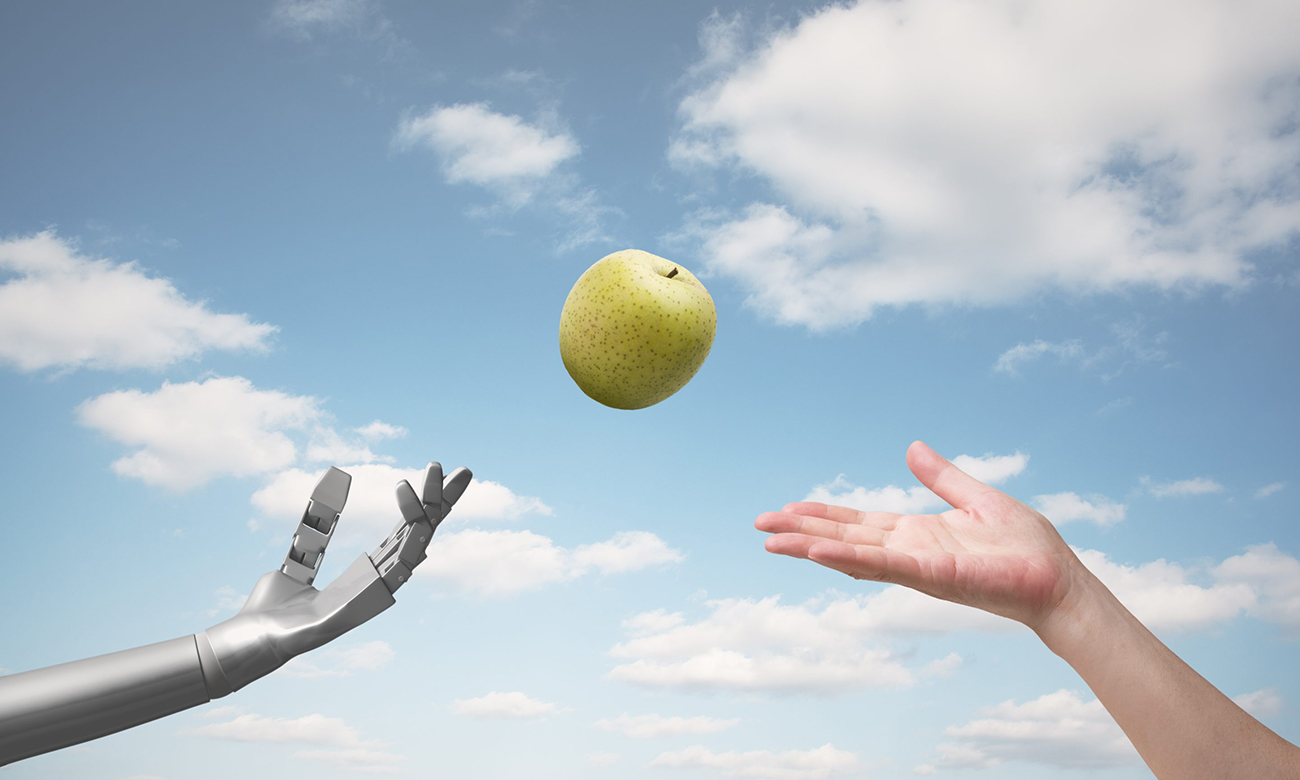
食品制造商很快就能利用人工智能和真實世界的患者數(shù)據(jù)集來優(yōu)化其產(chǎn)品的營養(yǎng),,造福糖尿病患者和糖尿病前期患者,,甚至廣大普通人群。
美國疾病控制和預(yù)防中心(U.S. Centers for Disease Control and Prevention)的數(shù)據(jù)顯示,,近 40% 的美國人是糖尿病前期患者,,他們升高的血糖水平可能對健康造成損害,但還不足以被正式診斷為糖尿病,。就糖尿病本身而言,,美國人口中略高于十分之一的人患有糖尿病。
總體而言,,大約半數(shù)的美國人是糖尿病或糖尿病前期患者,。
January AI 公司首席執(zhí)行官努欣·哈希米(Noosheen Hashemi)告訴《財富》雜志:“總的來說,我們國家的人口病得不輕,?!?/p>
她的公司銷售一款集成了連續(xù)血糖監(jiān)測儀(CGM)、智能手表或智能戒指等活動追蹤器,、以及人工智能驅(qū)動的APP的系統(tǒng),,能夠預(yù)測 3200 多萬種食物對每位不同用戶的血糖影響,并在用戶食用之前向他們推薦更健康的替代品,。
January 的工作原理是創(chuàng)建用戶生理數(shù)字模型,,基于用戶的血糖水平對脂肪、蛋白質(zhì)和碳水化合物等宏量營養(yǎng)素組合產(chǎn)生的反應(yīng)數(shù)據(jù),,預(yù)測用戶的身體對不同食物將有怎樣的反應(yīng),。
這些真人的“數(shù)字雙胞胎 ”采用匿名方式,分為三個組群:糖尿病患者,、糖尿病前期患者和非糖尿病患者,。然后,該公司從食品公司獲取食譜或食品,,分析這些食品對組群中血糖水平的影響,,從而幫助食品公司生產(chǎn)出更健康的產(chǎn)品。
公司的新合作伙伴包括雀巢公司(Nestlé),。
哈希米說,,這項技術(shù)“使食品公司的產(chǎn)品開發(fā)過程更加智能化”。她補充說,,"更重要的是,,在進行任何昂貴的實驗室工作之前",這項技術(shù)能讓食品公司去虛擬地創(chuàng)造產(chǎn)品,,完善產(chǎn)品,。
食物對健康的重要作用
食物是血糖管理的最大影響因素,。哈希米說,食物對于某些疾病“扮演了重要角色”,,可能會導致肥胖癥,、心臟病甚至癌癥。
哈希米說,,公司的消費者系統(tǒng)可以幫助人們更早地發(fā)現(xiàn)糖尿病和糖尿病前期,,還能幫助患者采取可以逆轉(zhuǎn)病情的生活方式,防止出現(xiàn)失明,、截肢,、心臟病發(fā)作、中風和腎臟問題等潛在的破壞性并發(fā)癥,。
“大概有 3000 萬人做過基因測試,,”她指的是美國消費者直接購買的基因祖先測試。"如果有 3000 萬人嘗試使用 CGM會怎樣,?許多糖尿病前期患者和糖尿病患者都不知道自己患有糖尿病,,因此無法進行干預(yù),這意味著許多主要器官會持續(xù)受損,。據(jù)估計,,850 萬美國人患有糖尿病,其中 20% 對自己患有糖尿病并不知情,,而高達 90% 的糖尿病前期患者不清楚自己的病情,。
雖然美國糖尿病協(xié)會(American Diabetes Associations)建議所有 45 歲及以上的成年人和有重要風險因素的年輕人每年進行一次糖尿病篩查,但各醫(yī)療機構(gòu)的指導方針不盡相同,,導致患者漏診。
哈希米說,,未確診者 “在不知不覺中慢慢走向潛在疾病,,人們依賴標準護理來保護自己免受疾病侵襲,但他們發(fā)現(xiàn)時已經(jīng)為時太晚,,”并發(fā)癥已經(jīng)出現(xiàn),。
哈希米說,CGM 為消費者提供了將健康掌握在自己手中的機會,,她將這一過程稱為“攔截你的不健康食物”,。
她說,“我們認為,,人們只需花很少的錢,,就能知道自己是否屬于那種血糖過高的人,”她指的是那些進食后血糖水平異常飆升,,達到不健康水平的糖尿病或糖尿病前期患者,。
“他們可以很容易地改變飲食選擇,,比如不要在冰沙里放進一整根香蕉?!?/p>
惠及普羅大眾
當January AI的消費者系統(tǒng)內(nèi)置人工智能功能發(fā)現(xiàn)用戶已經(jīng)食用了不健康的食物,,它會推薦低血糖替代品,還會提示用戶何時開始或停止間歇性禁食,,并在最適合降低血糖峰值的時間提醒他們鍛煉,。
這套系統(tǒng)配備有一個14天傳感器,定價288美元——這是許多人無法承受的價格,。
哈希米說,,人工智能飲食計劃和定制的運動推送警報等附加功能非常優(yōu)秀,但通過研究飲食計劃來發(fā)現(xiàn)葡萄糖趨勢并進行自我干預(yù)并非必要,。
她鼓勵那些最近沒有接受糖尿病或糖尿病前期篩查的人,,以及負擔不起January AI系統(tǒng)的人,要求醫(yī)生給他們處方更便宜的CGM傳感器,。雖然保險可能無法支付費用——市場上最便宜的品牌約為80美元——即使是一個14天的傳感器提供的數(shù)據(jù)也可能改變他們的生活,,甚至挽救生命。
但并不是每個人都能負擔得起,。這就是為什么哈希米很高興與大牌食品制造商合作,,讓每個人的日常膳食更健康。這樣,,January AI的技術(shù)就可以使普羅大眾受益——即使只是間接受益,。
“我們對食品系統(tǒng)的結(jié)構(gòu)性變化感到非常興奮——這對我們來說是巨大的改變,”她說,?!八梢宰屆總€人都變得更健康,這就是我們?yōu)橹V迷的地方,?!埃ㄘ敻恢形木W(wǎng))
食品制造商很快就能利用人工智能和真實世界的患者數(shù)據(jù)集來優(yōu)化其產(chǎn)品的營養(yǎng),造福糖尿病患者和糖尿病前期患者,,甚至廣大普通人群,。
美國疾病控制和預(yù)防中心(U.S. Centers for Disease Control and Prevention)的數(shù)據(jù)顯示,近 40% 的美國人是糖尿病前期患者,,他們升高的血糖水平可能對健康造成損害,,但還不足以被正式診斷為糖尿病。就糖尿病本身而言,,美國人口中略高于十分之一的人患有糖尿病,。
總體而言,大約半數(shù)的美國人是糖尿病或糖尿病前期患者。
January AI 公司首席執(zhí)行官努欣·哈希米(Noosheen Hashemi)告訴《財富》雜志:“總的來說,,我們國家的人口病得不輕,。”
她的公司銷售一款集成了連續(xù)血糖監(jiān)測儀(CGM),、智能手表或智能戒指等活動追蹤器,、以及人工智能驅(qū)動的APP的系統(tǒng),能夠預(yù)測 3200 多萬種食物對每位不同用戶的血糖影響,,并在用戶食用之前向他們推薦更健康的替代品,。
January 的工作原理是創(chuàng)建用戶生理數(shù)字模型,基于用戶的血糖水平對脂肪,、蛋白質(zhì)和碳水化合物等宏量營養(yǎng)素組合產(chǎn)生的反應(yīng)數(shù)據(jù),,預(yù)測用戶的身體對不同食物將有怎樣的反應(yīng)。
這些真人的“數(shù)字雙胞胎 ”采用匿名方式,,分為三個組群:糖尿病患者,、糖尿病前期患者和非糖尿病患者。然后,,該公司從食品公司獲取食譜或食品,,分析這些食品對組群中血糖水平的影響,從而幫助食品公司生產(chǎn)出更健康的產(chǎn)品,。
公司的新合作伙伴包括雀巢公司(Nestlé),。
哈希米說,這項技術(shù)“使食品公司的產(chǎn)品開發(fā)過程更加智能化”,。她補充說,,"更重要的是,在進行任何昂貴的實驗室工作之前",,這項技術(shù)能讓食品公司去虛擬地創(chuàng)造產(chǎn)品,,完善產(chǎn)品。
食物對健康的重要作用
食物是血糖管理的最大影響因素,。哈希米說,,食物對于某些疾病“扮演了重要角色”,可能會導致肥胖癥,、心臟病甚至癌癥。
哈希米說,,公司的消費者系統(tǒng)可以幫助人們更早地發(fā)現(xiàn)糖尿病和糖尿病前期,,還能幫助患者采取可以逆轉(zhuǎn)病情的生活方式,防止出現(xiàn)失明,、截肢,、心臟病發(fā)作、中風和腎臟問題等潛在的破壞性并發(fā)癥。
“大概有 3000 萬人做過基因測試,,”她指的是美國消費者直接購買的基因祖先測試,。"如果有 3000 萬人嘗試使用 CGM會怎樣?許多糖尿病前期患者和糖尿病患者都不知道自己患有糖尿病,,因此無法進行干預(yù),,這意味著許多主要器官會持續(xù)受損。據(jù)估計,,850 萬美國人患有糖尿病,,其中 20% 對自己患有糖尿病并不知情,而高達 90% 的糖尿病前期患者不清楚自己的病情,。
雖然美國糖尿病協(xié)會(American Diabetes Associations)建議所有 45 歲及以上的成年人和有重要風險因素的年輕人每年進行一次糖尿病篩查,,但各醫(yī)療機構(gòu)的指導方針不盡相同,導致患者漏診,。
哈希米說,,未確診者 “在不知不覺中慢慢走向潛在疾病,人們依賴標準護理來保護自己免受疾病侵襲,,但他們發(fā)現(xiàn)時已經(jīng)為時太晚,,”并發(fā)癥已經(jīng)出現(xiàn)。
哈希米說,,CGM 為消費者提供了將健康掌握在自己手中的機會,,她將這一過程稱為“攔截你的不健康食物”。
她說,,“我們認為,,人們只需花很少的錢,就能知道自己是否屬于那種血糖過高的人,,”她指的是那些進食后血糖水平異常飆升,,達到不健康水平的糖尿病或糖尿病前期患者。
“他們可以很容易地改變飲食選擇,,比如不要在冰沙里放進一整根香蕉,。”
惠及普羅大眾
當January AI的消費者系統(tǒng)內(nèi)置人工智能功能發(fā)現(xiàn)用戶已經(jīng)食用了不健康的食物,,它會推薦低血糖替代品,,還會提示用戶何時開始或停止間歇性禁食,并在最適合降低血糖峰值的時間提醒他們鍛煉,。
這套系統(tǒng)配備有一個14天傳感器,,定價288美元——這是許多人無法承受的價格。
哈希米說,,人工智能飲食計劃和定制的運動推送警報等附加功能非常優(yōu)秀,,但通過研究飲食計劃來發(fā)現(xiàn)葡萄糖趨勢并進行自我干預(yù)并非必要。
她鼓勵那些最近沒有接受糖尿病或糖尿病前期篩查的人,以及負擔不起January AI系統(tǒng)的人,,要求醫(yī)生給他們處方更便宜的CGM傳感器,。雖然保險可能無法支付費用——市場上最便宜的品牌約為80美元——即使是一個14天的傳感器提供的數(shù)據(jù)也可能改變他們的生活,甚至挽救生命,。
但并不是每個人都能負擔得起,。這就是為什么哈希米很高興與大牌食品制造商合作,讓每個人的日常膳食更健康,。這樣,,January AI的技術(shù)就可以使普羅大眾受益——即使只是間接受益。
“我們對食品系統(tǒng)的結(jié)構(gòu)性變化感到非常興奮——這對我們來說是巨大的改變,,”她說,。“它可以讓每個人都變得更健康,,這就是我們?yōu)橹V迷的地方,。“(財富中文網(wǎng))
Food manufacturers will soon be able to use AI and real-world patient data sets to nutritionally optimize their food—for diabetics, pre-diabetics, and the general population.
Nearly 40% of Americans have pre-diabetes, according to the U.S. Centers for Disease Control and Prevention—a condition in which blood glucose levels are elevated and can cause damage, but aren’t high enough to warrant an official diagnosis of diabetes. When it comes to diabetes itself, slightly more than a tenth of the U.S. population has the condition.
All told, roughly half of the U.S. population has one of the two.
“In general, we are just a very sick population of people,” Noosheen Hashemi, CEO of January AI, tells Fortune.
Her company markets a system that uses a continuous glucose monitor (CGM), an activity tracker like a smart watch or ring, and an AI-powered app. It can predict the blood glucose impact of more than 32 million foods on each user and suggest healthier alternatives—before they’re consumed.
January works by creating digital models of user physiology, using empirical evidence of how their glucose levels reacts to combinations of macronutrients—like fat, protein, and carbohydrates—to predict responses to different foods.
These “digital twins” of real people are anonymized and divided into three cohorts: diabetic, pre-diabetic, and non-diabetic. The company then takes recipes or foods from food companies and returns an analysis of the food’s impact on glucose levels in the cohorts, in a bid to help food companies create healthier products.
Among the company’s new partners: Nestlé.
The technology “gives food companies an additional level of intelligence beyond what they already employ in their product development process,” Hashemi says. What’s more, it will allow them to create and refine products virtually, “before any costly lab work is undertaken,” she adds.
Food’s ‘outsized role’ in disease
Food is the most impactful factor in glucose management. It plays “an outsized role in disease” in general, according to Hashemi, potentially influencing the development of obesity, heart disease, and even cancer.
The company’s consumer system could help detect diabetes and pre-diabetes earlier, Hashemi says. And it could help patients make lifestyle choices that may reverse the condition—and prevent the development of potentially devastating complications like blindness, amputation, heart attack, stroke, and kidney problems.
“Something like 30 million people took a genetic test,” she says, referring to U.S. purchases of direct-to-consumer genetic ancestry tests. “What if 30 million people tried a CGM one time?”
Many pre-diabetics and diabetics are unaware they have the condition and, thus, can’t intervene, meaning continuous damage to many major organs. Of the estimated 8.5 million Americans who have diabetes, 20% don’t know. And a whopping 90% of pre-diabetics are unaware of their condition.
While the American Diabetes Associations recommends that all adults 45 and older, and younger people with major risk factors, are screened annually for the conditions, guidelines vary by medical organizations, and patients slip through the cracks.
The undiagnosed are “slowly marching toward potential disease without knowing it,” Hashemi says. “People are depending on the standard of care to protect them from disease, but they’re just finding out too late,” by the time complications have developed.
A CGM, Hashemi says, offers consumers the chance to take their health into their own hands—a process she calls “hacking your spiking food.”
“We thought people could inexpensively just find out if they’re one of those spikers,” she says, referring to people with diabetes or pre-diabetes whose blood glucose levels spike unusually high, to unhealthy levels, after eating.
“They could easily update their diet choices, like not putting an entire banana inside their smoothie.”
Benefitting the masses
When the AI built into January AI’s consumer system spots trouble foods a user has eaten, it will recommend lower glycemic alternatives. It also prompts users to start and stop intermittent fasting and to exercise at times that are optimal for reducing blood glucose spikes.
But the system, with one two-week sensor, costs $288—a price inaccessible to many.
Extras like AI diet planning and customized exercise push alerts are ideal, but not necessary to spot concerning glucose trends and intervene oneself, with research and diet planning, Hashemi says.
She encourages those who haven’t been screened for diabetes or pre-diabetes recently and who can’t afford January AI’s system to ask their doctor for a prescription for an inexpensive CGM sensor. While insurance likely won’t cover the cost—around $80 for the cheapest on the market—and the data provided by even one two-week sensor could be life-changing or even life-saving.
But not everyone can afford that, either. That’s why Hashemi is excited about partnering with major food manufacturers to make every-day meals healthier for everyone. That way, January AI’s technology can benefit a mass audience—even if only indirectly.
“We’re really excited about structural change to the food system—that, for us, is huge,” she says. “It could make everyone less sick, and that’s what we’re kind of obsessed with.”






